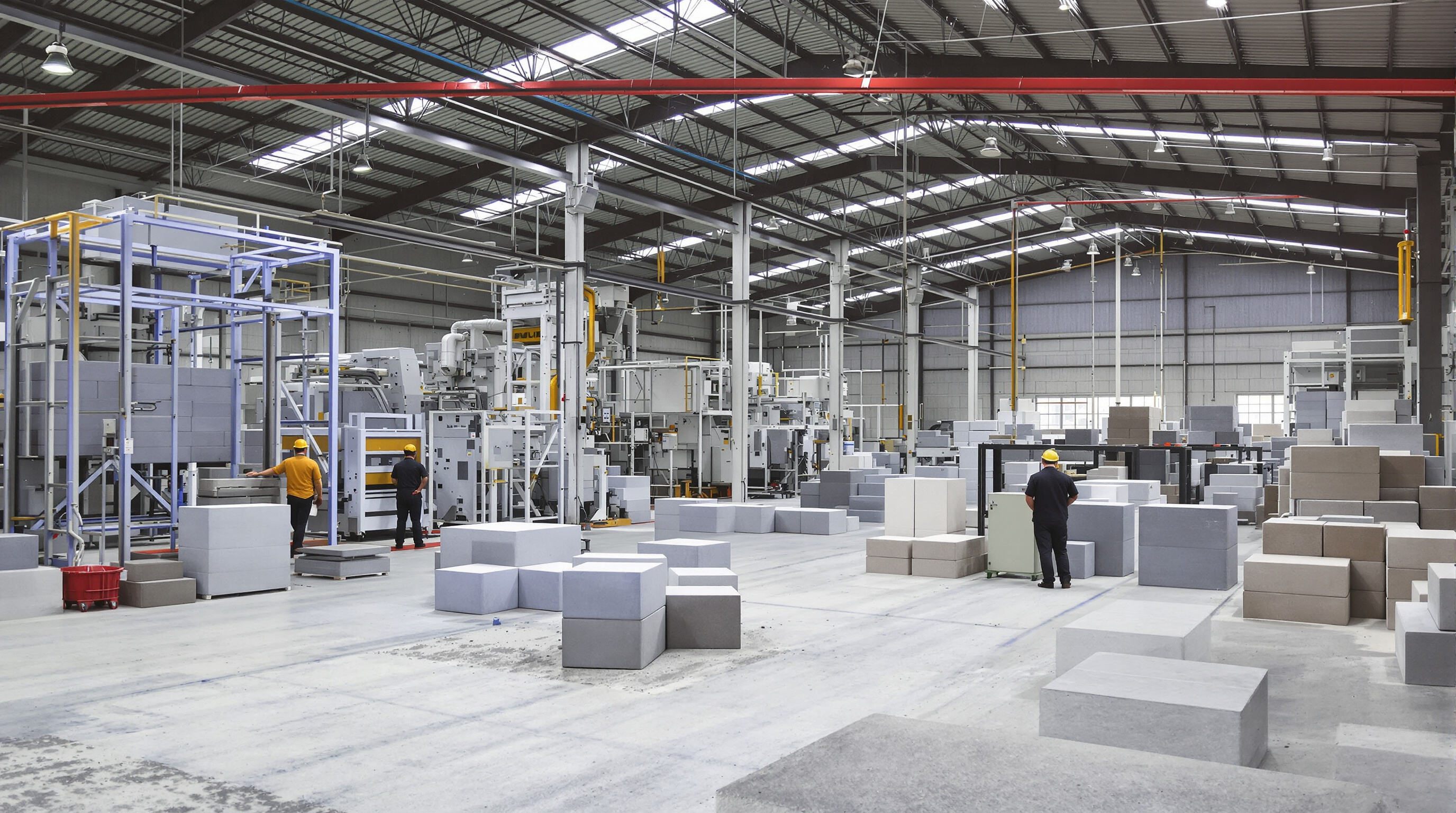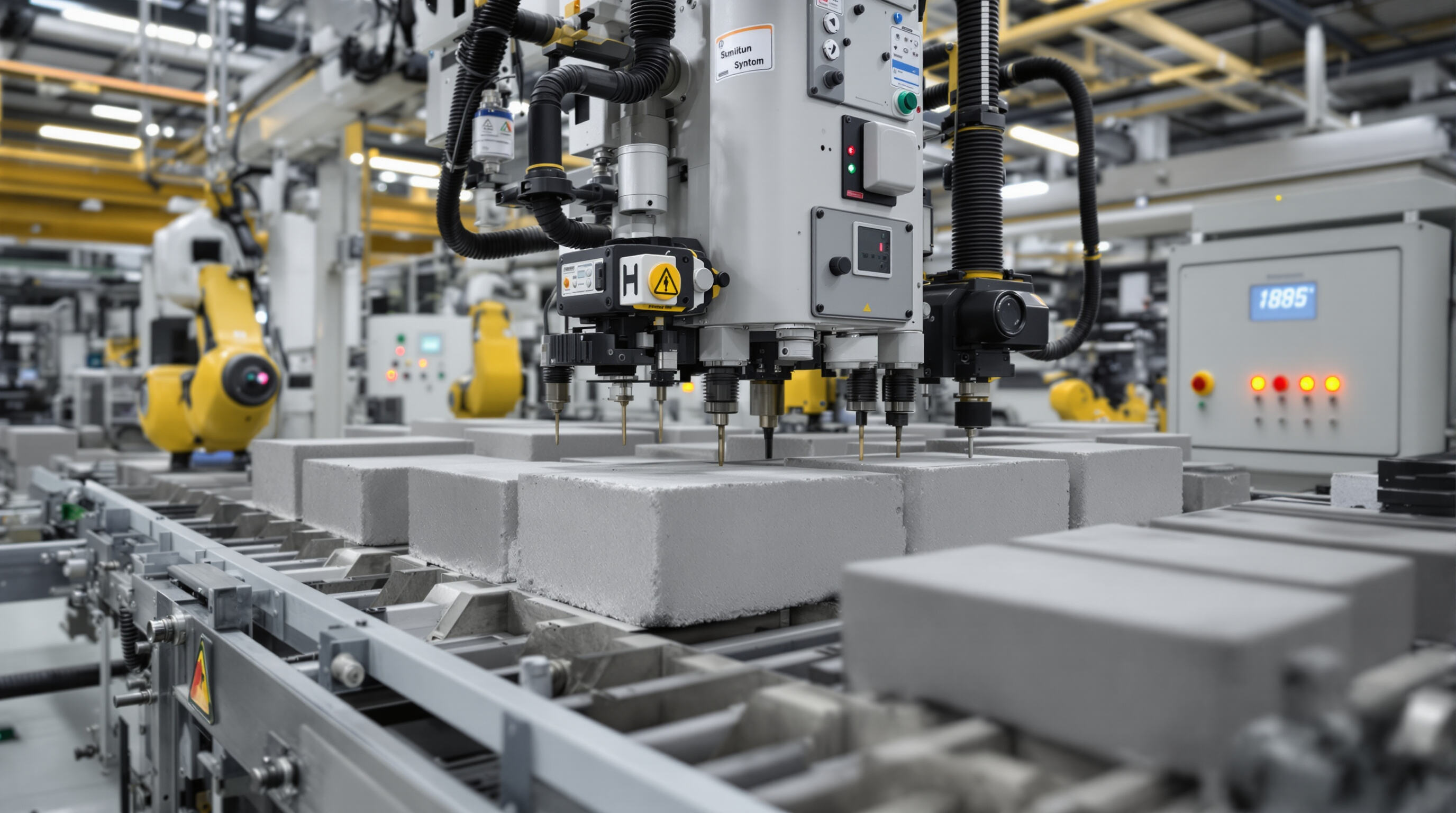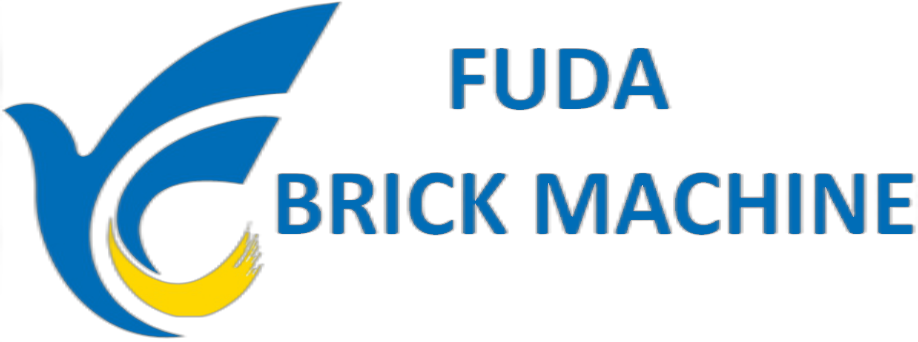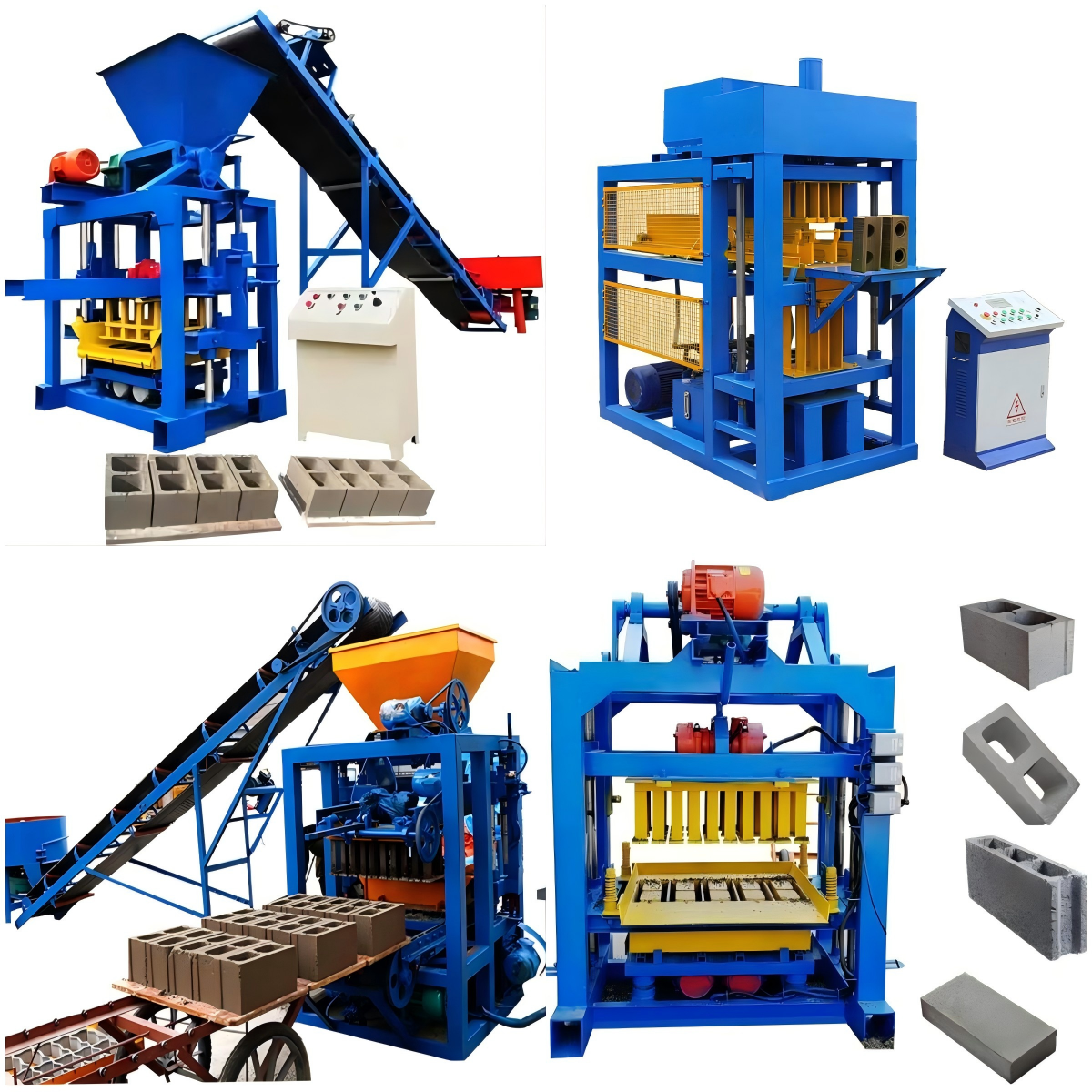Core Differences Between Semi Automatic and Fully Automatic Block Making Machines
What Defines a Semi Automatic Block Making Machine
Semi automatic block making machines work by blending what people do with what machines can handle on their own. The workers still need to put in the cement, gravel, sand mix, along with water into the mixing unit before feeding everything into the hopper part of the machine. When everything's ready inside, the hydraulics kick in and start pressing down hard to form those blocks properly. Once they've had time to cure and set properly, it's back to manual work again where operators take out the blocks and stack them neatly for transport. This combination method helps maintain good quality throughout production runs while not wasting much material either. Plus, the running costs stay pretty reasonable when compared against completely automated setups which cost a fortune upfront. These types of machines are great fits for smaller operations or mid sized factories looking to boost output without breaking the bank. They typically produce around 300 to 600 blocks every hour, cutting down on the heavy lifting required in traditional methods but avoiding the steep price tag associated with going all in on automation.
How Fully Automatic Block Making Machines Redefine Production
Modern fully automatic block making machines work like complete production units all on their own. Instead of relying on workers, these systems use robotic arms or conveyor belts to take care of everything from feeding raw materials to mixing them, shaping blocks, letting them cure, and finally stacking them ready for transport. The control systems can tweak the mix proportions as needed during operation, and various sensors keep an eye on things like how tightly packed the blocks are, their overall density, and temperature readings throughout the process. When something goes off track, the system automatically fixes it using those cloud connected controllers we've been talking about. Most plants report around 95 to almost 98 percent uptime when running these machines non stop. They typically crank out between 1500 and 3000 blocks every single hour. One factory actually cut down their workforce by about two thirds after installing this equipment, but at the same time managed to produce twice as many blocks each day according to reports from Reitmachine Plant back in 2022.
| Feature | Semi Automatic | Fully Automatic |
|---|---|---|
| Automation Level | Partial (manual loading/unloading) | End-to-end |
| Hourly Output | 300â600 blocks | 1,500â3,000 blocks |
| Labor per Shift | 3â5 workers | 1â2 supervisors |
| Uptime Efficiency | 80â85% | 95â98% |
Key Differences in Automation, Operation, and Output
Three core distinctions define the performance gap:
- Automation: Semi automatic models rely on human labor for feeding and removal; fully automatic systems manage all stages autonomously.
- Operation: Labor requirements differ significantlyâsemi automatic setups need 3â5 workers per shift, while automated lines require only 1â2 supervisors.
- Output: Daily production capacity varies sharply. Semi automatic machines produce up to ~6,000 blocks daily, whereas automated systems generate 18,000â24,000 blocksâa 200â300% increase confirmed in Indian plant trials (2023). For expanding operations, this scalability directly impacts return on investment timelines.
Production Efficiency and Output Capacity: Semi Automatic vs. Fully Automatic

Output Rates and Cycle Time Comparison
Semi automatic block makers usually manage around 300 to 600 standard blocks each hour because workers have to handle materials and molds manually. The fully automatic versions are another story altogether though they can crank out between 1500 and 2000 blocks per hour thanks to those PLC controlled systems that tie together mixing, shaping, and curing processes. What really makes a difference is how much faster these machines work. While semi automatic systems take about two minutes per cycle, their automated counterparts cut that down to just under a minute and twenty seconds. Industry data shows this translates into roughly 40 to 60 percent higher output overall, which explains why so many manufacturers are investing in automation despite the upfront costs.
Operational Downtime and Production Continuity
Automatic systems typically run at around 95% uptime because they have built-in sensors that spot problems with materials or mechanical stress long before anything actually breaks down. Semi auto machines aren't quite as reliable though, clocking in somewhere between 80% and 85% uptime on average. Why the difference? Well, these machines still require human intervention which causes delays and leads to more frequent shutdowns for adjustments. The newer generation of fully automatic lubrication systems makes a real difference too. These systems prevent most bearing issues altogether, so instead of spending about 20 minutes each day on maintenance stops, operators now only need to deal with them for less than five minutes daily. That kind of improvement adds up over time.
Real-World Case Study: Monthly Output in Typical Plants
At a medium sized factory running semi automatic machines, they were making around 15 thousand standard blocks each month when working 8 hours a day, 6 days a week. Things changed dramatically after they invested in full automation though. Production jumped all the way up to 36 thousand blocks monthly—that's like doubling what they used to make plus another 40%. And interestingly enough, their payroll expenses actually went down by about two thirds during this time. What we're seeing here isn't just isolated either. Across the manufacturing sector, companies producing large volumes are finding their return on investment comes much faster now with automated systems typically paying for themselves within 18 to 24 months according to recent industry reports.
*Output metrics based on standardized 400x200x200mm concrete block production
Labor Requirements and Long-Term Operational Costs
Staffing Needs for Semi Automatic Block Making Machine Operations
Running a semi automatic block maker still needs quite a bit of hands on work from people. The crew has to load up the raw ingredients, move around wet concrete mixtures, keep an eye on how long the vibrations last, then take out those freshly made blocks so they can dry properly. Most factories run with anywhere between three to maybe five workers per shift, though someone experienced usually needs to be around to make sure everything stays consistent batch after batch. Labor costs eat up more than half of what these plants spend month after month. That makes them really sensitive when wages go up or down, or when there aren't enough workers available. These issues become even bigger problems when business picks up and production needs to scale up quickly.
Reduced Human Intervention in Fully Automatic Systems
Automatic systems cut down on manual work thanks to robots and conveyor belts running throughout the facility. The whole process from moving concrete mixtures to shaping them into blocks and stacking finished products happens without needing hands-on labor. Programmable logic controllers handle things like controlling vibrations during setting, checking density levels, and managing the curing process so just one tech can watch over several production lines at once. Workers now spend their time programming these machines, keeping an eye on operations, and doing regular maintenance rather than dealing with physically demanding tasks all day long. This change helps prevent those annoying repetitive strain injuries and makes round-the-clock production possible. Looking at staffing numbers, maintenance crews make up roughly twenty percent of total workers in fully automated plants, whereas this figure jumps significantly higher in facilities that still rely partly on manual processes.
Comparative Analysis of Labor and Maintenance Expenses
Fully automatic machines definitely come with bigger maintenance bills because they rely on those complicated sensors and control systems. But when we look at the big picture, the money saved on labor makes these machines worth considering for many businesses. Semi-automatic equipment actually costs about 25% more in labor per 1,000 blocks made, even though their mechanical parts are much simpler. Contract manufacturers who switch to full automation can expect to save anywhere from $42k to $67k each year. Most find their investment pays off somewhere between 26 and 34 months after installation. And here's something important for shop owners: if their operation runs over 4,000 hours every year, going smart with automation starts making real financial sense according to recent industry data from construction tech reports in early 2024.
Technology Integration and Automation in Modern Block Production

Role of PLC and HMI in Semi Automatic Block Making Machine Control
Block making machines that are semi automatic rely on things called Programmable Logic Controllers or PLCs along with Human Machine Interfaces (HMIs) to manage different parts of the process including when materials get mixed, how molds fill up, and when vibrations happen during production. The people running these machines can tweak settings like pressure levels which usually range from around 1500 to 3000 pounds per square inch, plus they set how long each cycle takes typically between 15 to 25 seconds using touchscreen controls. They still need to keep an eye on things manually though because quality control is important. According to research published last year, integrating these PLC systems cuts down on wasted materials by about 18 percent when compared to completely manual operations. What's great about this setup is it makes everything run smoother while not needing expensive full automation solutions either.
Advanced Sensor and Control Systems in Fully Automatic Machines
Modern fully automatic systems rely on internet connected sensors along with artificial intelligence analysis to make production run smoother. The moisture detection equipment keeps track of water cement mixtures pretty accurately, staying within about half a percent variance. At the same time, these smart systems look at vibration patterns and can actually predict when bearings might start failing as much as three days before it happens. All this tech means machines keep running most of the time, with downtime dropping below 3%. Factories are hitting impressive numbers too, producing anywhere from 2,100 to 2,400 concrete blocks every single hour without needing anyone to step in and adjust things manually.
Balancing High Automation with Skilled Labor Needs
Fully automatic systems cut down on direct labor somewhere around 40 to 60 percent, but there's still a need for technicians who know their way around mechatronics and can read through data diagnostics reports. On the flip side, semi automatic versions need more staff hands on deck, though they do give companies better visibility into what's happening during production runs. This makes it easier to spot problems when they arise and fix them quicker. Some forward thinking manufacturers have started implementing augmented reality training programs lately. These help workers pick up new skills while keeping the benefits of automated processes intact. It's basically trying to get the best of both worlds where machines handle repetitive tasks but humans remain adaptable enough to deal with unexpected issues.
Cost Analysis and Return on Investment (ROI) Comparison
Initial Investment: Semi Automatic vs. Fully Automatic Block Making Machine
Semi automatic block making machines typically fall between $18k and $35k, which is around 35 to 50 percent cheaper than their fully automatic counterparts that can set businesses back anywhere from $55k all the way up to $120k. This big gap in pricing basically comes down to how complicated the automated parts are. Fully automatic systems need things like advanced robotics, various sensors throughout, plus sophisticated control panels that handle everything automatically. For new businesses getting started or those operating on a smaller scale, going with semi automatic equipment makes sense as it represents a much safer investment. These machines allow operators to get into production without breaking the bank first, while still leaving room later on to upgrade when budget allows and demand increases.
Maintenance and Long-Term Operational Costs
Automatic machines tend to cost about 20% more each year for maintenance because they have all those fancy electronics and sensors running around inside them. But here's the catch: they save money on labor in the long run. We're talking about needing just one or two people watching over things during a shift instead of three to five folks required when using semi automatic equipment. Plus, these fully automatic setups stay operational much longer too – around 95% uptime compared to roughly 80-85% for the older systems. When companies actually sit down and crunch the numbers looking at everything from staff wages to electricity bills and how much material gets wasted, most find that their investment pays off quicker than expected. The break even point comes around 12 to 18 months sooner than traditional calculations would suggest.
Break-Even Timeline and ROI for Both Machine Types
For manufacturers making popular items such as hollow blocks, semi automatic equipment usually breaks even within 8 to 14 months thanks to relatively modest upfront expenses. The fully automatic alternatives need around 18 to 30 months before they start paying off, though these machines become much more profitable once operations ramp up significantly. Plants that churn out more than 10 thousand units each day experience returns roughly 30 percent quicker because of better quality control and fewer defective products coming off the line (just 2.4% defects compared to 6.8% in manual setups). When looking at actual profit figures instead of just theoretical ROI models, plant managers get clearer insights into how different factors like staffing levels, electricity consumption, and material waste impact bottom lines depending on what kind of volumes they're actually handling day after day.
FAQ
1. What is the main difference between semi automatic and fully automatic block making machines?
The main difference lies in the level of automation. Semi-automatic machines require manual intervention for tasks like loading and unloading, whereas fully automatic machines handle all stages autonomously using robotics and conveyor systems.
2. How does the output capacity compare between the two types of machines?
Semi automatic machines typically produce 300 to 600 blocks per hour, while fully automatic machines can produce 1,500 to 3,000 blocks per hour, significantly increasing productivity.
3. What are the labor requirements for each type of machine?
Semi-automatic machines require 3-5 workers per shift, while fully automatic machines need only 1-2 supervisors, reducing labor costs.
4. Which machine type offers better long-term operational cost benefits?
Fully automatic machines offer better long-term cost benefits due to reduced labor needs and higher production efficiency, despite higher initial investments.
5. How do maintenance costs vary between semi automatic and fully automatic machines?
Maintenance costs for fully automatic machines are generally higher due to sophisticated systems, but labor savings and continuous operation make them cost-effective in the long run.
Table of Contents
- Core Differences Between Semi Automatic and Fully Automatic Block Making Machines
- Production Efficiency and Output Capacity: Semi Automatic vs. Fully Automatic
- Labor Requirements and Long-Term Operational Costs
- Technology Integration and Automation in Modern Block Production
- Cost Analysis and Return on Investment (ROI) Comparison
- FAQ

